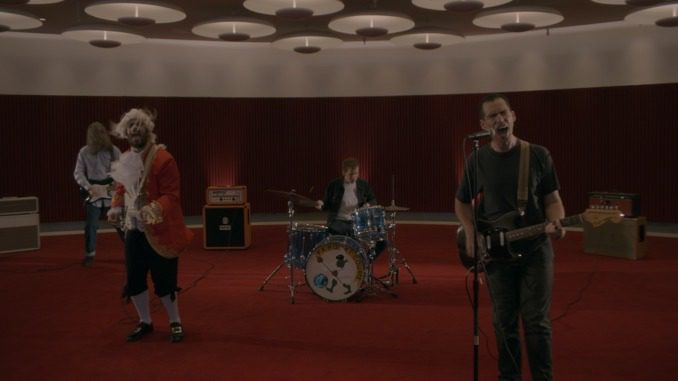When Graham Nash enters the bar at Berlin Under A in New York City’s East Village, the Paste team succeed for the most part in holding ourselves together, challenging as it may have been. I mean, that’s Order of the British Empire-receiving, tens of millions of records-selling, Joni Mitchell-dating Graham Nash standing right there! After a disarming handshake and a light chat, we are miked up and on our way into a delightful discussion about the role of artistic expression in keeping this Renaissance man moving forward. Watch the interview video embedded at the bottom of this article.
“I’m having a good time,” Nash says. “I think because I’m still having a good time that I’ll probably be able to live a little longer. I’m not giving up. I’m not retiring. I have no interest in retiring.” The energy and pleasure Graham gleans from this constant creative engagement is evident within a few seconds of meeting him, and it’s evident in the pages of A Life in Focus.
Our early conversation centers on Graham’s knack for capturing the natural expressions of his subjects, unaware they are being photographed more often than not. In his constant “quest to be invisible,” he has landed on a few strategies that help him hide his lens in plain sight. Most important among these strategies is to Always Be Carrying. No matter the make or model—whether he’s packing the fanciest Hasselblad or an outdated iPhone—as long as the camera is a constant presence, it tends to fade into the scenery and his images show some of the most photographed people on the planet, unguarded.
The book is full of satisfyingly candid photos of the artists associated with Nash, including Mitchell, Stephen Stills, David Crosby and other characters from the early ’70s Laurel Canyon scene. It is also full of landscapes, cityscapes, still lifes and thoroughly unexpected candid pairings, like Alice Cooper and Philip Seymour Hoffman in the same frame at the Kentucky Derby.
For me, the unpredictable nature of this collection is one of its biggest assets. As soon as I think I sense a theme to a few consecutive images, I turn the page to find surprises like an interestingly lit sewer grate or a tangled heap of folding chairs. Of course, the book needn’t be enjoyed cover-to-cover—the way I chose to do on multiple occasions—but the dynamic shot selection is a pleasure regardless of how you navigate.
Graham’s ability to see beauty in ordinary settings is another key to the work. “Look at the composition of this microphone on this chair,” Graham says, pointing to my mediocre audio cabling work off-camera. ”I know that I could take a picture of that and show it to you, and you’d go, ‘How cool is that?!’ I see differently, and I hear differently.”
Which naturally brings up the topic of Nash’s near-synesthesia, a cousin of true synesthesia, notably experienced by Wassily Kandinsky. “When I look at the image and I look up at the full moon, and I look up into the whisky grey clouds, I can imagine violins playing! I’m not hearing a melody … But I can imagine—very clearly and very easily—music in photographs.”
As we wrap our discussion and prepare to go our separate ways, Graham opens the neatly wrapped package he brought along with him. It is a gorgeous black-and-white print that I initially think is a photo centered beneath the Eiffel Tower, looking straight up. Of course it is not that. It ends up being a closeup of an ordinary cardboard four-cup coffee tray, to everybody’s delight.
A Life in Focus: The Photography of Graham Nash is available in stores and on the internet now. Sit in on our conversation with the artist below (featuring music by The Breaks Inc.) and hear a 1979 Nash performance from the Paste archives further down.



